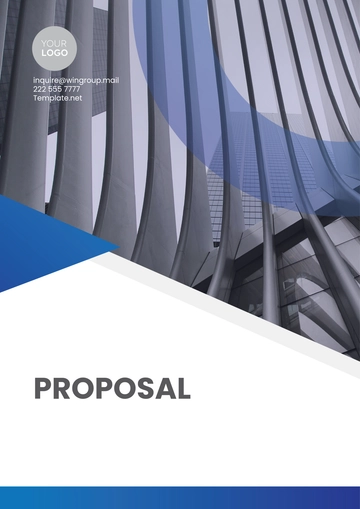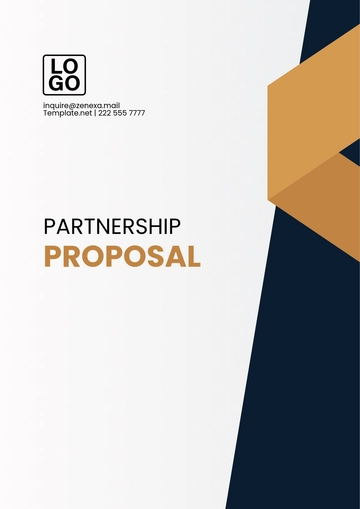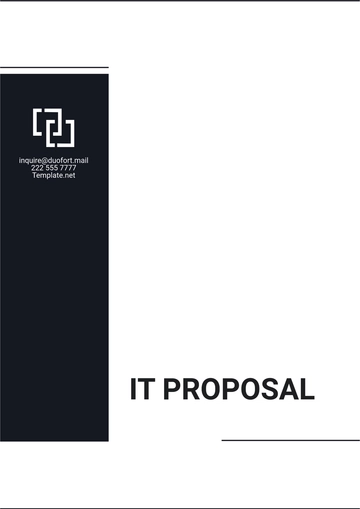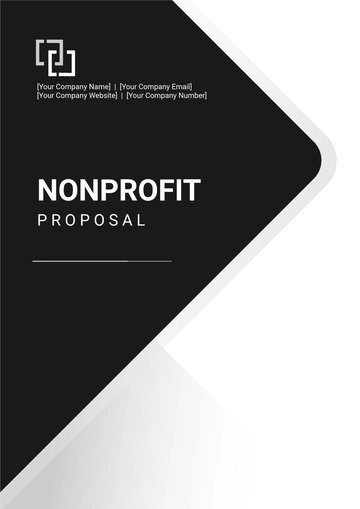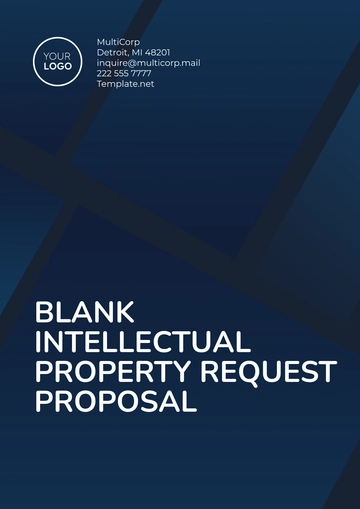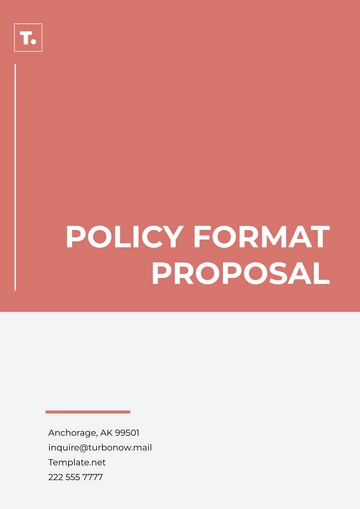Free Transport Proposal
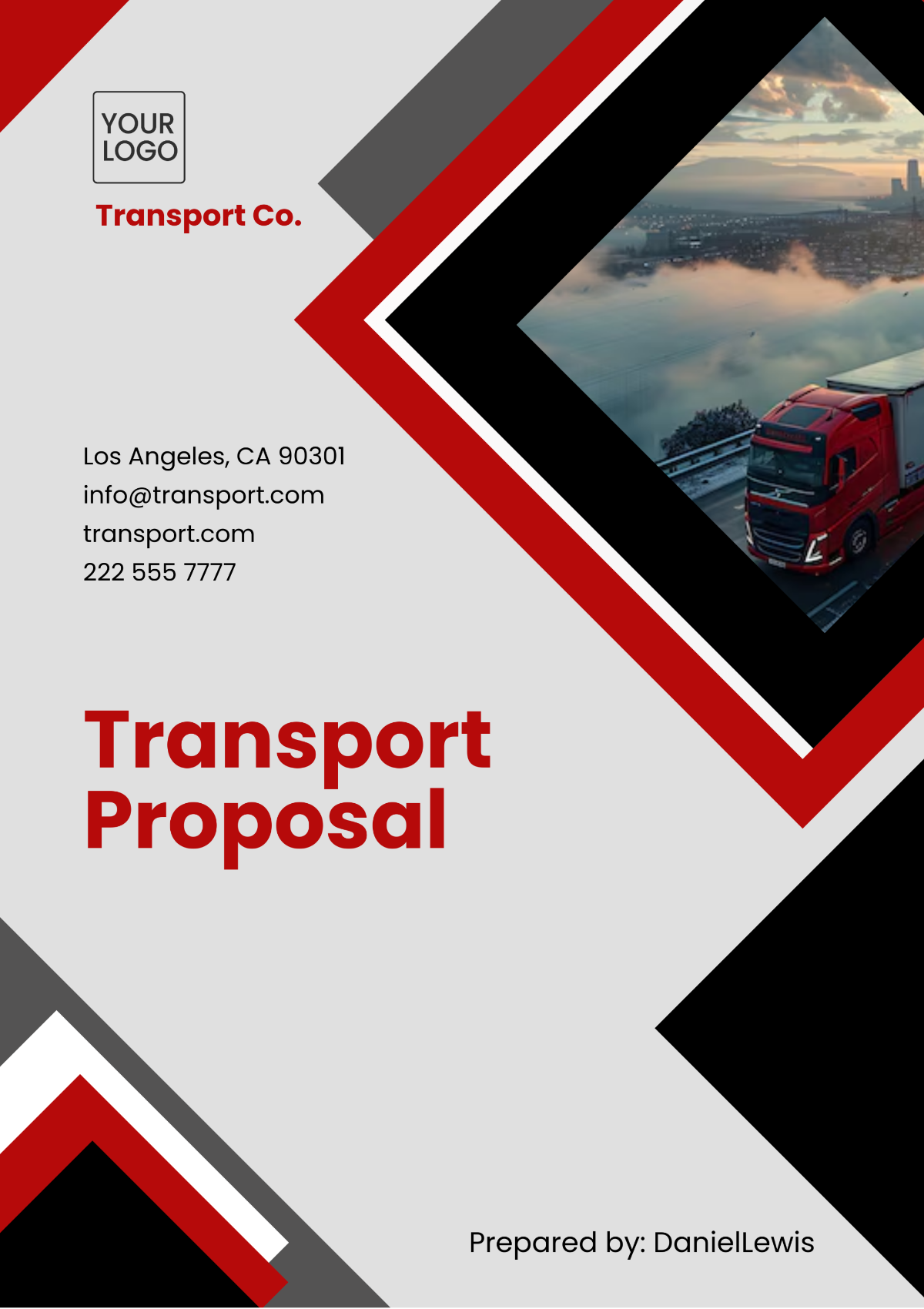
1. Executive Summary
This Transport Proposal, developed by [Your Company Name], presents a forward-thinking approach to addressing the critical transportation challenges expected in urban environments by the year [2050] and beyond. As urbanization continues to accelerate, our transportation systems must evolve to handle increased demands while minimizing environmental impact and enhancing overall quality of life.
Our proposal introduces a series of integrated solutions designed to modernize urban transportation infrastructure. These solutions include the implementation of smart transportation systems, the development of sustainable public transport networks, the adoption of autonomous vehicles, and the establishment of multimodal transportation hubs. By leveraging technological advancements and sustainable practices, we aim to create a transportation ecosystem that is efficient, environmentally friendly, and resilient.
The proposal outlines a strategic implementation plan divided into three distinct phases, spanning from research and development to full-scale deployment. A detailed cost analysis highlights the required investments and anticipated returns, while our stakeholder engagement strategy ensures collaborative efforts with key partners. Risk assessment and mitigation strategies are also included to address potential challenges.
2. Introduction
2.1 Purpose of the Proposal
The purpose of this proposal is to outline a comprehensive and future-oriented transportation strategy that addresses the growing challenges of urban mobility. As cities expand and evolve, there is a critical need to modernize transportation systems to support sustainable growth and improve the quality of life for urban residents. This proposal aims to provide actionable solutions that leverage emerging technologies and sustainable practices to build a resilient transportation infrastructure.
2.2 Scope of the Proposal
The scope of this proposal encompasses several key areas within urban transportation:
Smart Transportation Systems: Integration of advanced technologies for optimizing traffic flow and improving safety.
Sustainable Public Transport Networks: Development and enhancement of eco-friendly public transport options.
Autonomous Vehicles and Electric Fleets: Introduction and integration of autonomous and electric vehicles into urban transportation.
Multimodal Transportation Hubs: Creation of hubs that connect various modes of transport for seamless mobility.
Infrastructure Modernization: Upgrading existing infrastructure to support new technologies and sustainable practices.
Green Energy Solutions: Implementation of renewable energy sources to power transportation networks.
2.3 Proposal Objective
The primary objective of this proposal is to develop a transportation system that is:
Efficient: Minimizes travel times and reduces congestion.
Sustainable: Lowers environmental impact through the use of renewable energy and green technologies.
Resilient: Capable of adapting to future demands and challenges.
Inclusive: Accessible and beneficial to all residents, including underserved communities.
The specific goals include:
Reducing Traffic Congestion: Achieve a [40%] reduction in traffic congestion by [2060].
Sustainable Energy Adoption: Ensure that [60%] of the public transportation network operates on sustainable energy by [2055].
Autonomous and Electric Vehicles: Have [50%] of all vehicles in urban areas be autonomous and electric by [2058].
Multimodal Hubs: Establish [100] multimodal transportation hubs in key urban areas by [2060].
3. Current Transportation Challenges
3.1 Increasing Urbanization
The global trend of urbanization continues to accelerate, with urban populations expected to exceed [70%] of the total global population by [2060]. This rapid growth places significant pressure on existing transportation systems, which are often inadequate to meet the increased demand. The challenges associated with urbanization include:
Overburdened Infrastructure: Existing roads and public transport systems may not support the increased volume of users.
Rising Demand for Mobility: Higher demand for transportation services can lead to congestion and delays.
3.2 Traffic Congestion
Traffic congestion remains a major issue in urban areas, with average travel times increasing by [30%] over the past two decades. Key factors contributing to congestion include:
Increased Vehicle Ownership: Rising vehicle ownership rates lead to more cars on the road.
Inefficient Traffic Management: Outdated traffic management systems struggle to handle the volume of traffic effectively.
Urban Sprawl: Expansion of city boundaries increases travel distances and contributes to congestion.
3.3 Environmental Concerns
The reliance on fossil fuels in current transportation systems has significant environmental repercussions:
Air Pollution: Transportation accounts for approximately [25%] of global CO2 emissions, contributing to poor air quality.
Climate Change: Greenhouse gas emissions from vehicles contribute to global warming and climate change.
Resource Depletion: The extraction and use of fossil fuels deplete natural resources and have adverse environmental impacts.
3.4 Outdated Infrastructure
Much of the existing transportation infrastructure was designed and built several decades ago, making it ill-suited for modern demands:
Aging Roads and Bridges: Many roads and bridges are in need of repair or replacement due to wear and tear.
Inadequate Capacity: Existing infrastructure often lacks the capacity to handle current and future traffic volumes.
Limited Technological Integration: Outdated infrastructure lacks modern technologies that could improve efficiency and safety.
3.5 Public Health Impacts
The negative impacts of current transportation systems on public health are substantial:
Respiratory Issues: Air pollution from vehicles contributes to respiratory problems such as asthma and bronchitis.
Mental Health: Long commutes and traffic congestion can lead to increased stress and mental health issues.
Obesity and Physical Inactivity: Reliance on cars and lack of active transportation options contribute to sedentary lifestyles and obesity.
4. Proposed Transport Solutions
4.1 Smart Transportation Systems
Smart transportation systems use advanced technologies to enhance the efficiency and safety of transportation networks:
Real-Time Traffic Monitoring: Use of sensors and cameras to monitor traffic conditions in real-time, allowing for dynamic traffic management.
Adaptive Traffic Signals: Traffic signals that adjust in real-time based on current traffic conditions to reduce delays.
Predictive Maintenance: Utilization of data analytics to predict and address maintenance needs before they become critical issues.
4.2 Sustainable Public Transport Networks
Developing sustainable public transport networks involves expanding and improving eco-friendly transportation options:
Electric Buses and Trams: Introduction of electric buses and trams to reduce emissions and noise pollution.
High-Speed Rail: Development of high-speed rail networks to provide efficient long-distance travel.
Dedicated Public Transport Lanes: Implementation of dedicated lanes for public transport to avoid delays and improve reliability.
4.3 Autonomous Vehicles and Electric Fleets
Autonomous vehicles (AVs) and electric fleets represent a major leap forward in transportation technology:
Autonomous Vehicles: Self-driving cars and trucks that use sensors and AI to navigate and operate without human intervention.
Electric Fleets: Vehicles powered by electricity, reducing dependence on fossil fuels and lowering emissions.
Integration with Smart Systems: AVs will be integrated with smart transportation systems for optimized routing and traffic management.
4.4 Multimodal Transportation Hubs
Multimodal transportation hubs are designed to integrate various modes of transport into a cohesive system:
Hub Locations: Strategically placed in key urban areas to facilitate easy transfers between transport modes.
Integration with Local Transport: Hubs will connect with local buses, bike-sharing programs, and pedestrian pathways.
User-Friendly Design: Hubs will feature amenities such as information kiosks, comfortable waiting areas, and real-time schedule displays.
4.5 Infrastructure Modernization
Modernizing infrastructure involves upgrading existing systems to support new technologies and sustainability goals:
Smart Roads: Implementation of smart road technologies that communicate with vehicles and traffic management systems.
Enhanced Electric Grids: Upgrading electrical grids to support the increased demand for EV charging.
Green Building Standards: Adoption of green building standards for transportation infrastructure to improve energy efficiency and sustainability.
4.6 Green Energy Solutions
Green energy solutions are essential for reducing the environmental impact of transportation systems:
Solar Energy: Installation of solar panels on public transport facilities and vehicle charging stations.
Wind Energy: Utilization of wind turbines to generate electricity for transportation infrastructure.
Energy Storage: Development of advanced energy storage systems to manage supply and demand for renewable energy.
5. Implementation Strategy
5.1 Phase 1: Research and Development (Year 2050-2052)
The first phase focuses on conducting comprehensive research and development activities to validate technologies and strategies:
Technology Assessment: Evaluate emerging technologies for smart transportation systems, autonomous vehicles, and renewable energy solutions.
Feasibility Studies: Conduct feasibility studies to assess the practicality and cost-effectiveness of proposed solutions.
Partnerships: Establish partnerships with technology providers, research institutions, and government agencies to support R&D efforts.
Phase 1 Activities
Activity | Description | Timeline |
|---|---|---|
Technology Assessment | Review and evaluate new technologies and their applicability to urban transportation. | Year 2050-2051 |
Feasibility Studies | Analyze the feasibility of proposed solutions through pilot studies and simulations. | Year 2051-2052 |
Partnerships | Form alliances with key stakeholders to support R&D efforts and technology validation. | Year 2050-2052 |
5.2 Phase 2: Pilot Programs (Year 2053-2055)
The second phase involves launching pilot programs to test proposed solutions in real-world settings:
Pilot Testing: Implement pilot programs in selected cities to evaluate the performance and impact of smart transportation systems, AVs, and multimodal hubs.
Data Collection: Gather data on system performance, user satisfaction, and operational efficiency to inform adjustments and improvements.
Public Engagement: Engage with communities to gather feedback and address concerns regarding new transportation systems.
Phase 2 Activities
Activity | Description | Timeline |
|---|---|---|
Pilot Testing | Deploy pilot programs to test technologies and solutions in real-world environments. | Year 2053-2054 |
Data Collection | Collect and analyze data on performance, efficiency, and user satisfaction from pilot programs. | Year 2054-2055 |
Public Engagement | Conduct public outreach and consultations to gather feedback and address concerns. | Year 2053-2055 |
5.3 Phase 3: Full-Scale Deployment (Year 2056-2060)
The final phase focuses on the comprehensive rollout of tested solutions and full integration into urban transportation systems:
Scaling Up: Expand successful pilot programs to additional cities and regions, ensuring broad implementation of smart systems, AVs, and multimodal hubs.
Infrastructure Upgrades: Complete necessary infrastructure upgrades to support the full deployment of new technologies.
Ongoing Monitoring: Establish ongoing monitoring and maintenance programs to ensure continued performance and adaptability of transportation systems.
Phase 3 Activities
Activity | Description | Timeline |
|---|---|---|
Scaling Up | Roll out successful solutions and technologies across multiple cities and regions. | Year 2056-2058 |
Infrastructure Upgrades | Complete upgrades to infrastructure to support new transportation technologies. | Year 2056-2059 |
Ongoing Monitoring | Implement continuous monitoring and maintenance programs to ensure system performance and reliability. | Year 2056-2060 |
6. Cost and Budget Estimation
6.1 Capital Expenditure
The capital expenditure for the proposed transportation systems is projected to be [$50 billion]. This includes investments in:
Infrastructure Development: Construction and modernization of roads, bridges, and multimodal hubs.
Technology Integration: Implementation of smart transportation systems, autonomous vehicles, and electric vehicle charging stations.
Renewable Energy Projects: Installation of solar panels, wind turbines, and energy storage systems.
Capital Expenditure Breakdown
Category | Estimated Cost | Description |
|---|---|---|
Infrastructure Development | [$20 billion] | Construction and modernization of roads and hubs. |
Technology Integration | [$15 billion] | Implementation of smart systems and autonomous vehicles. |
Renewable Energy Projects | [$15 billion] | Solar panels, wind turbines, and energy storage systems. |
6.2 Operational Expenditure
Annual operational expenditure is estimated at [$3 billion]. This includes:
Maintenance Costs: Regular maintenance of infrastructure and technology systems.
Staff Salaries: Salaries for staff involved in the operation and management of transportation systems.
Energy Costs: Costs associated with powering electric vehicles and public transport systems.
Operational Expenditure Breakdown
Category | Estimated Annual Cost | Description |
|---|---|---|
Maintenance Costs | [$1 billion] | Ongoing maintenance of infrastructure and technology. |
Staff Salaries | [$1 billion] | Salaries for operational staff and management personnel. |
Energy Costs | [$1 billion] | Electricity costs for powering vehicles and transport systems. |
6.3 Return on Investment
The long-term return on investment (ROI) is anticipated to be substantial:
Cost Savings: By reducing traffic congestion, lowering emissions, and decreasing fuel consumption, the transportation system is expected to save up to [$10 billion] annually.
Revenue Generation: Increased public transport ridership and efficiency improvements will contribute to higher revenues and reduced operational costs.
Economic Benefits: Enhanced transportation infrastructure will drive economic growth by improving accessibility and supporting local businesses.
Projected ROI
Benefit | Estimated Value | Description |
|---|---|---|
Cost Savings | [$10 billion annually] | Savings from reduced congestion and lower fuel costs. |
Revenue Generation | [15% increase in public transport revenues] | Increased ridership and operational efficiency. |
Economic Benefits | Improved accessibility and support for local businesses. | Economic growth and job creation. |
7. Stakeholders and Collaboration
7.1 Government Partnerships
Collaboration with government entities is crucial for:
Regulatory Support: Ensuring compliance with regulations and standards for new technologies and infrastructure.
Funding Opportunities: Securing government funding and grants to support project implementation.
Public Awareness: Government agencies can assist in public outreach and education to promote the adoption of new transportation solutions.
Government Partnership Roles
Role | Description | Example |
|---|---|---|
Regulatory Support | Assistance in navigating regulatory requirements and adapting laws for new technologies. | Collaboration with transportation departments. |
Funding Opportunities | Access to government funding, grants, and subsidies for project implementation. | Application for federal and state grants. |
Public Awareness | Support in public education campaigns to encourage adoption of new transportation solutions. | Government-led awareness programs and promotions. |
7.2 Private Sector Collaboration
Engagement with the private sector will provide:
Technological Expertise: Partnering with technology companies for the development and deployment of smart systems, AVs, and electric vehicles.
Investment: Securing private investment to complement public funding and accelerate project implementation.
Innovation: Leveraging private sector innovation to drive advancements in transportation technology and infrastructure.
Private Sector Collaboration Benefits
Benefit | Description | Example |
|---|---|---|
Technological Expertise | Access to cutting-edge technology and expertise in areas such as AI, autonomous systems, and EVs. | Partnerships with tech firms and automotive manufacturers. |
Investment | Private investment to support project funding and expansion. | Venture capital and corporate sponsorships. |
Innovation | Encouragement of innovative solutions and technologies for improved transportation systems. | Collaborative R&D initiatives and pilot programs. |
7.3 Community Engagement
Engaging with local communities is essential for:
Needs Assessment: Identifying and addressing the specific transportation needs and preferences of residents.
Feedback Collection: Gathering input from community members to ensure new systems are user-friendly and accessible.
Adoption and Support: Building community support and encouraging the adoption of new transportation solutions through outreach and education.
Community Engagement Strategies
Strategy | Description | Example |
|---|---|---|
Needs Assessment | Surveys and consultations to understand community transportation needs and preferences. | Community forums and focus groups. |
Feedback Collection | Mechanisms for gathering input from residents on proposed transportation solutions. | Online surveys and public meetings. |
Adoption and Support | Outreach and educational programs to promote new transportation systems and encourage usage. | Public workshops and information campaigns. |
8. Risk Assessment and Mitigation
8.1 Technological Risks
Technological risks include:
System Failures: Potential for new technologies to experience malfunctions or failures.
Slow Adoption Rates: Risk that new technologies may not be adopted as quickly as anticipated.
Technological Risk Mitigation Strategies
Risk | Mitigation Strategy | Description |
|---|---|---|
System Failures | Extensive Testing and Phased Rollouts | Conduct thorough testing and implement new systems gradually to identify and address issues. |
Slow Adoption Rates | User Education and Support Programs | Provide training and support to facilitate adoption and address user concerns. |
8.2 Regulatory Challenges
Regulatory challenges include:
Outdated Regulations: Existing regulations may not align with new technologies.
Compliance Issues: Difficulty in ensuring compliance with evolving laws and standards.
Regulatory Challenge Mitigation Strategies
Challenge | Mitigation Strategy | Description |
|---|---|---|
Outdated Regulations | Collaboration with Policymakers | Work with policymakers to update regulations and standards to align with new technologies. |
Compliance Issues | Regular Regulatory Reviews | Conduct regular reviews to ensure ongoing compliance with evolving laws and standards. |
8.3 Financial Risks
Financial risks include:
Budget Overruns: Potential for project costs to exceed initial estimates.
Revenue Shortfalls: Risk of lower-than-expected revenue from public transport services.
Financial Risk Mitigation Strategies
Risk | Mitigation Strategy | Description |
|---|---|---|
Budget Overruns | Detailed Financial Planning and Monitoring | Develop detailed budgets and monitor expenses closely to prevent overruns. |
Revenue Shortfalls | Diversified Funding Sources | Secure multiple funding sources, including public and private investments, to reduce reliance on any single revenue stream. |
8.4 Environmental Risks
Environmental risks include:
Energy Supply Interruptions: Risk of disruptions in renewable energy supply.
Environmental Impact of Construction: Potential environmental impacts from construction activities.
Environmental Risk Mitigation Strategies
Risk | Mitigation Strategy | Description |
|---|---|---|
Energy Supply Interruptions | Backup Systems and Alternative Energy Sources | Implement backup power systems and explore alternative energy sources to ensure consistent supply. |
Environmental Impact of Construction | Environmental Impact Assessments and Mitigation Plans | Conduct impact assessments and develop plans to minimize environmental impacts of construction activities. |
- 100% Customizable, free editor
- Access 1 Million+ Templates, photo’s & graphics
- Download or share as a template
- Click and replace photos, graphics, text, backgrounds
- Resize, crop, AI write & more
- Access advanced editor
Develop persuasive proposals with the Transport Proposal Template from Template.net. This editable and customizable template helps you present transport services and solutions. Tailor it using our Ai Editor Tool to meet the specific needs of potential clients.
You may also like
- Business Proposal
- Research Proposal
- Proposal Request
- Project Proposal
- Grant Proposal
- Photography Proposal
- Job Proposal
- Budget Proposal
- Marketing Proposal
- Branding Proposal
- Advertising Proposal
- Sales Proposal
- Startup Proposal
- Event Proposal
- Creative Proposal
- Restaurant Proposal
- Blank Proposal
- One Page Proposal
- Proposal Report
- IT Proposal
- Non Profit Proposal
- Training Proposal
- Construction Proposal
- School Proposal
- Cleaning Proposal
- Contract Proposal
- HR Proposal
- Travel Agency Proposal
- Small Business Proposal
- Investment Proposal
- Bid Proposal
- Retail Business Proposal
- Sponsorship Proposal
- Academic Proposal
- Partnership Proposal
- Work Proposal
- Agency Proposal
- University Proposal
- Accounting Proposal
- Real Estate Proposal
- Hotel Proposal
- Product Proposal
- Advertising Agency Proposal
- Development Proposal
- Loan Proposal
- Website Proposal
- Nursing Home Proposal
- Financial Proposal
- Salon Proposal
- Freelancer Proposal
- Funding Proposal
- Work from Home Proposal
- Company Proposal
- Consulting Proposal
- Educational Proposal
- Construction Bid Proposal
- Interior Design Proposal
- New Product Proposal
- Sports Proposal
- Corporate Proposal
- Food Proposal
- Property Proposal
- Maintenance Proposal
- Purchase Proposal
- Rental Proposal
- Recruitment Proposal
- Social Media Proposal
- Travel Proposal
- Trip Proposal
- Software Proposal
- Conference Proposal
- Graphic Design Proposal
- Law Firm Proposal
- Medical Proposal
- Music Proposal
- Pricing Proposal
- SEO Proposal
- Strategy Proposal
- Technical Proposal
- Coaching Proposal
- Ecommerce Proposal
- Fundraising Proposal
- Landscaping Proposal
- Charity Proposal
- Contractor Proposal
- Exhibition Proposal
- Art Proposal
- Mobile Proposal
- Equipment Proposal
- Student Proposal
- Engineering Proposal
- Business Proposal
